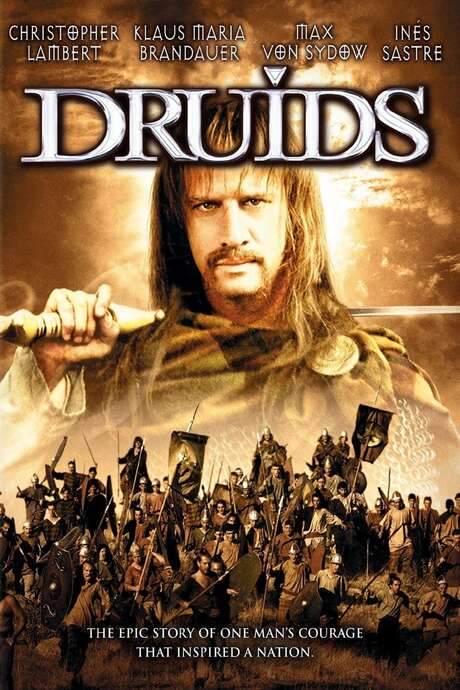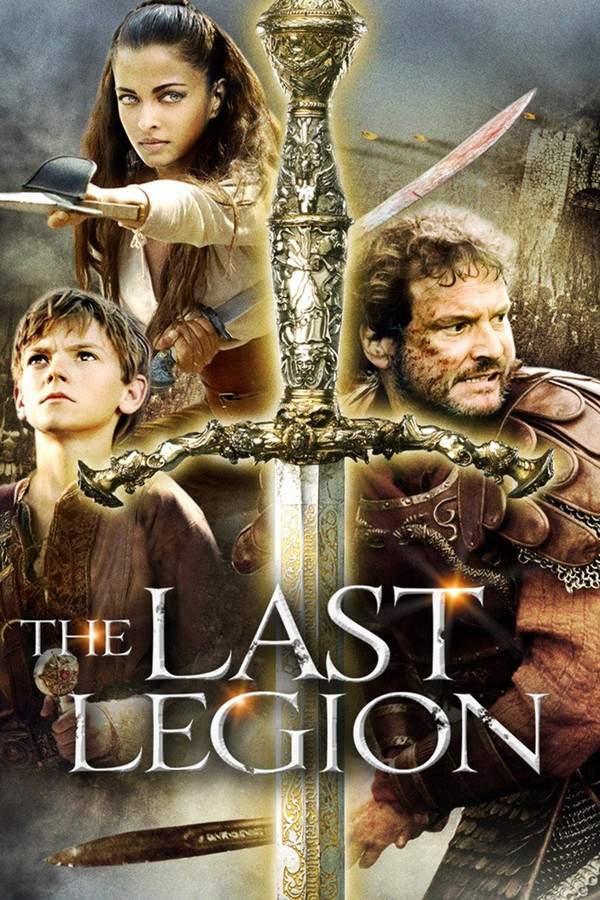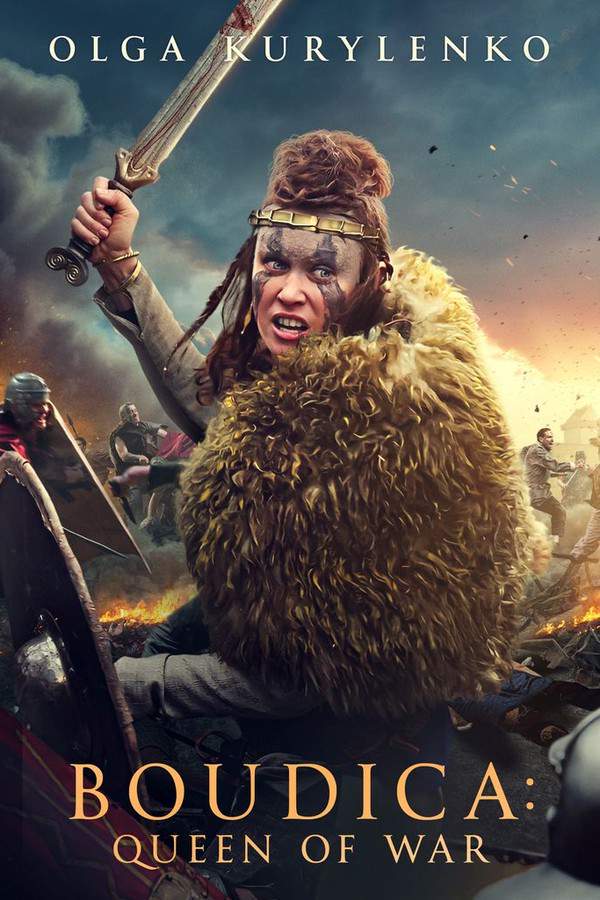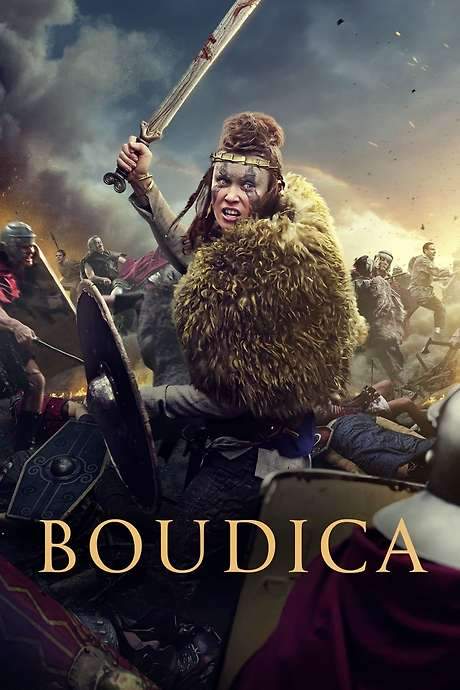
Druids
Year: 2001
Runtime: 124 mins
Language: French
Director: Jacques Dorfmann
In 60 BC, arch‑druid Guttuart sees a comet, interpreting it as a sign of a new king for Gaul. He travels to Gergovia, the Arverni capital, for a tribal council. Young Vercingetorix and his friend Eponia sneak into the cavern where father Celtill plans to claim a crown. Roman spies disguised as Gauls kill Celtill, throwing the council into chaos and setting the stage for Vercingetorix’s rise.
Warning: spoilers below!
Haven’t seen Druids yet? This summary contains major spoilers. Bookmark the page, watch the movie, and come back for the full breakdown. If you're ready, scroll on and relive the story!
Druids (2001) – Full Plot Summary & Ending Explained
Read the complete plot breakdown of Druids (2001), including all key story events, major twists, and the ending explained in detail. Discover what really happened—and what it all means.
In 60 B.C., Gaul is a patchwork of tribes and destinies, where omens and power plays intertwine. The story opens as the druid chieftain Guttuart, Max von Sydow and his people witness a brilliant comet streak across the sky, a sign they interpret as the arrival of a new king for Gaul. Within the shimmering cavern where Celtill, the Arvernes’ chief, hosts a pivotal gathering, a drama unfurls: a disguised Roman spy fires an arrow at Celtill as he lifts a crown once worn by the old kings, hinting at Rome’s far-reaching designs. Celtill is swiftly placed under arrest by his brother Gobanittio, who seizes the moment and flees with the crown. Young Vercingetorix, the future leader the Arvernes will rally around, and the fearless Epona slip into the scene, their curiosity drawing them toward the critical chamber where destiny begins to tilt. As the boy watches, tragedy unfolds in the harsh light of the torch; Celtil’s fate is sealed, and the moment gnaws at Vercingetorix’s heart. Across the firelit hush, destiny speaks in a way a child cannot escape: Vercingetorix vows vengeance as he witnesses his uncle’s brutality and the crown’s theft, a vow that will shape the course of a continent.
Years pass, and the grown Vercingetorix takes up the burden of that oath. On a road guarded by Roman presence, Guttuart senses danger as Julius Caesar’s legion advances; terrified, Guttuart retreats while the invasion looms. The conqueror Caesar, recognizing leadership when he sees it, acknowledges Christopher Lambert as the Arvernes’ unifying voice and invites him to join in an ambitious plan to invade Britain. Back in Gergovia, the young man’s resolve hardens as he exacts vengeance for his father by eliminating Gobanittio, and Caesar’s offer now tantalizes the tribes with the prospect of shared spoils if they join the campaign overseas. The road toward Britain becomes a chessboard of loyalties and ambitions, with Vercingetorix quietly weighing a future that could redefine Gaul’s fate.
At Bibracte, the Eduens’ capital, a council of chieftains gathers to hear Caesar’s grand design. Dumnorix, wary of Rome’s long hand in Gallic affairs, remains cautious, and Caesar responds with a stark measure: he takes Dumnorix’s children as hostages to secure obedience. In a private moment, Vercingetorix and Epona reconnect, and the Roman leader reveals the very crown that started it all, posing a stark choice: Rome could crown him the king of a united Gaul, or Gaul could keep its own destiny. Vercingetorix refuses the crown, insisting that a true king must be chosen by destiny, not by conquest. The tension tightens when Dumnorix plays Rome’s game, and Caesar orders Vercingetorix to capture him after Dumnorix’s attack on a Roman garrison. In a brutal turn, Dumnorix reveals that the Romans themselves organized Celtill’s death, and two Roman officers who trail Vercingetorix kill Dumnorix. The young leader kills one of the Romans himself, and the survivor is sent back to Caesar, delivering a blunt message: Caesar has created a dangerous foe, not an ally.
With his tribe’s blessing and his own steel-willed resolve, Vercingetorix is elected as the Arvernes’ commander during the siege of Gergovia, and he unleashes scorched-earth tactics upon the Roman lines. The subsequent campaign reaches a fever pitch at Avaricum, where Caesar orders a brutal massacre of the Gallic inhabitants, a ruthless reminder of Rome’s unyielding will. Caesar then marches toward Gergovia, drawing in other Gallic factions, including the Eduens who arrive only to witness the horror that Caesar’s campaign has sown. The alliance frays, and Caesar’s forces stagger back into the Rhine, where a stark pact with the Teutons reshapes the balance of power along the Rhine frontier.
The stage shifts to Alesia, where both sides marshal an immense force. Vercingetorix is named commander-in-chief of a united Gallic army, while Caesar lands with a formidable siege array. The Romans erect formidable fortifications around the besieged city, and a race against time begins as a relief army debates its leadership and arrival. Destiny, however, moves with a stubborn hand. The Gauls order a desperate counterstroke, and Vercingetorix agrees to lead a new relief force toward the Roman perimeter, even as he recognizes the peril of united resistance against a disciplined legion. The Gauls converge, arrows and javelins hiss, and the Teutons are unleashed by Caesar’s command to strike at the heart of the siege. In the end, the Gauls are overwhelmed; the siege lines tighten, and Vercingetorix lays down his weapons and kneels before Caesar, a surrender that seals his people’s fate.
The narrative closes on a grave, almost mythic note. Guttuart’s narration recalls the brutal arithmetic of history: Vercingetorix is imprisoned in Rome, executed by order of Caesar. In the shadow of a broader political storm, Caesar himself meets his doom two years later, assassinated on the Ides of March on the steps of the Roman Senate. The film leaves us with a stark meditation on power, destiny, and the cycles of rebellion that shape nations, reminding us that the tides of history are sometimes fiercer than any single leader’s will.
- In this retelling, the legend of Vercingetorix is framed through a tapestry of loyalties, betrayals, and hard choices, where the price of leadership often comes at the cost of entire peoples. The story combines intimate, human moments—young love and family loyalties—with grand, sweeping battles that test courage, strategy, and the belief that a people might chart its own future, if only it can find a leader bold enough to trust in destiny.
Last Updated: October 09, 2025 at 15:24
Unlock the Full Story of Druids
Don't stop at just watching — explore Druids in full detail. From the complete plot summary and scene-by-scene timeline to character breakdowns, thematic analysis, and a deep dive into the ending — every page helps you truly understand what Druids is all about. Plus, discover what's next after the movie.
Druids Timeline
Track the full timeline of Druids with every major event arranged chronologically. Perfect for decoding non-linear storytelling, flashbacks, or parallel narratives with a clear scene-by-scene breakdown.

Characters, Settings & Themes in Druids
Discover the characters, locations, and core themes that shape Druids. Get insights into symbolic elements, setting significance, and deeper narrative meaning — ideal for thematic analysis and movie breakdowns.

Similar Movies to Druids
Discover movies like Druids that share similar genres, themes, and storytelling elements. Whether you’re drawn to the atmosphere, character arcs, or plot structure, these curated recommendations will help you explore more films you’ll love.
Explore More About Movie Druids
Druids (2001) Scene-by-Scene Movie Timeline
Druids (2001) Movie Characters, Themes & Settings
Druids (2001) Spoiler-Free Summary & Key Flow
Movies Like Druids – Similar Titles You’ll Enjoy
The Last Legion (2007) Full Summary & Key Details
Boudica: Queen of War (2023) Spoiler-Packed Plot Recap
Arthdal Chronicles (1000) Movie Recap & Themes
Druid Gladiator Clone (2003) Ending Explained & Film Insights
Druids Druids Everywhere (2004) Complete Plot Breakdown
Burebista (1980) Ending Explained & Film Insights
The Barbarians (1987) Detailed Story Recap
Boudica (2023) Plot Summary & Ending Explained
The Viking Queen (1967) Full Movie Breakdown
Colossus of the Arena (1962) Full Summary & Key Details
Asterix the Gaul (1967) Plot Summary & Ending Explained
The Dacians (1967) Spoiler-Packed Plot Recap
Sign of the Pagan (1954) Ending Explained & Film Insights
Massacre in the Black Forest (1967) Spoiler-Packed Plot Recap
Giants of Rome (1964) Movie Recap & Themes

















